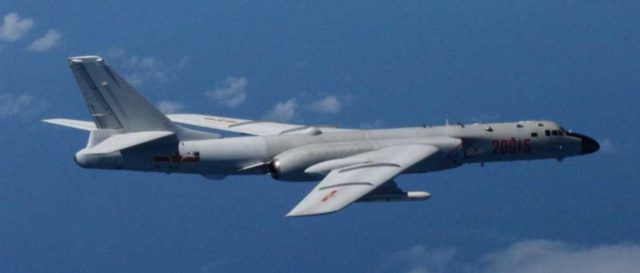By: Peter Wood
As the major reorganization of the Chinese military nears its 1-year anniversary, the Chinese press and propaganda organs are reflecting on the progress made and steps yet to take in this core part of China’s military modernization project. Though the reforms have made major progress toward streamlining the command structures, commentaries and editorials in official publications calling for the PLA to “cast off” old concepts about the predominance of the Ground Forces (PLAGF) are further indication that the transition has not gone smoothly. Joint operations, the ability of the Army, Air Force, Navy and Rocket Forces to work together in coordinated campaigns, also remains a key bottleneck for the PLA.
China is attempting to resolve a number of issues that remain in terms of military coordination between disparate regions and between military services. The military reorganization reduced the number of Military Regions from 7 to 5, and streamlined the command structure to prevent bottlenecks in communication due to the Ground Forces’ primacy in key organizations. The continuing attention given to “Big Ground Army, Big Military Region System Mindset” (大陆军、大军区体制下的思维定势) is understandable given the virtual omnipresence of Ground Force’ officers throughout the previous PLA structure.
The latest Defense White Paper, issued in May 2015, directly addressed the imbalance of influence between the services, calling on the PLA to abandon “the traditional mentality that land outweighs sea,” a sentiment that has been echoed in PLA Daily editorials (MOD, May 29, 2015; PLA Daily, December 1). The relegation of the Ground Forces to the role of “one among many” rather than the heart of the PLA is ruffling feathers and smashing “iron rice bowls”. Though unconfirmed by official Chinese governmental organizations, there is some reason to believe that the downsizing of 300,000 PLA personnel announced by Xi Jinping in September of this year will be expanded to further reduce Ground Force ranks (Bowen Press, November 24). Such a move would go beyond the earlier cut, which focused on cultural units and other non-combat troops, though it is possible that some of the downsized troops could be shifted to the People’s Armed Police, as has happened in previous downsizings (China Brief, March 24).
The reorganization and downsizings are just one step in the modernization process. Jointness, in particular is a goal in which there has been some more obvious progress. As the year progressed, a number of exercises were carried out to test the new command structures as well as to practice more basic capabilities such as trans-regional movement and joint operations. Realistic, Joint, and Trans-Regional (跨区) exercises are all focused on this goal. Earlier in the year, the Navy participated in its longest-distance-ever joint transregional counter-terror exercise in China’s Western province (Southern Weekend, February 8).
However, such exercises require an advanced level of coordination that the PLA is unused to. Perhaps tellingly, most long-distance operations are conducted by a single service. In one such operation, PLA Air Force Spokesperson Senior Colonel Shen Jinke (申进科) noted that Chinese aircraft overflew the Bashi and Miyako Channels (CCTV, November 30). These two channels are to the North and South of Taiwan, between the island and Okinawa and the Philippines, respectively. As noted in previous issues of China Brief, such flights are becoming routine, though they largely represent an aspirational combat capability (China Brief, October 26).
In April, the Commander and Commissar of the Eastern Theater, Liu Yuejun (刘粤军) and Zheng Weiping (郑卫平), published an editorial on the reform, noting that joint operational command was essential for effective command (Seeking Truth, April 1). Perhaps reflecting the organizational resistance to the reorganization, much of the editorial focused on obeying the Party’s commands and the strategic benefits of such a disruptive, but necessary reform. In late November, a commentary in the PLA Daily reviewed the progress made over the year, including the establishment of the new Rocket Force, Strategic Support Force, Joint Logistic Support Force and other departments (PLA Daily, November 25). The commentary argued that such top-level changes are necessary, and will be followed by improvements further down the chain of command.
Though the PLA certainly faces a number of structural and technological hurdles to becoming a true peer competitor to the United States, clear definition of its modernization goals, recognition of continuing weakness, and While great strides toward “basically accomplishing mechanization and making major progress in Informationization” by 2020, have been made, the odds of making good the reforms and making the PLA a truly joint military in the same time frame—or at least before Xi Jinping steps down, are decreasing. Over the next year more high profile exercises can be expected to hone joint operations and discover remaining bottlenecks in communication. For international analysts, additional attention should be directed toward the theory and progress of PLA joint operations, as well as other keystone concepts such as System of Systems. [1]
Peter Wood is the Editor of China Brief. You can follow him on Twitter @PeterWood_PDW
Notes
A study of “System of Systems” by Kevin McCauley is forthcoming from the Jamestown Foundation. Notable books on Joint Operations from authoritative sources include the following: Chen Rongdi (陈荣弟) and Mu Yongming (穆永明) eds, Science of Joint Tactics (联合战术学), (Beijing: Military Science Press, 2014). Tan Song (檀松) and Mu Yongming (穆永明) eds, Lectures on Joint Combat (联合战斗教程), (Beijing: Military Science Press, 2014). Zhang Peigao (张培高) ed., Lectures on Joint Campaign Command (联合战役指挥教程), (Beijing: Military Science Press, 2014).
- See more at: https://jamestown.org/program/china-hails-progress-toward-military-reforms-improved-jointness/#sthash.NGKBvAyd.dpuf

 CB_16_18-1.pdf
CB_16_18-1.pdf
No comments:
Post a Comment